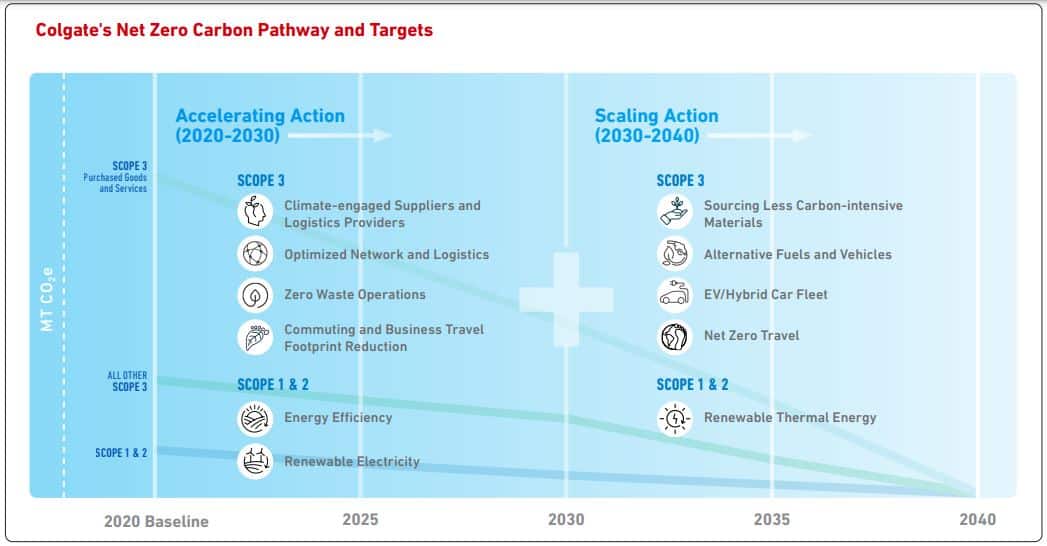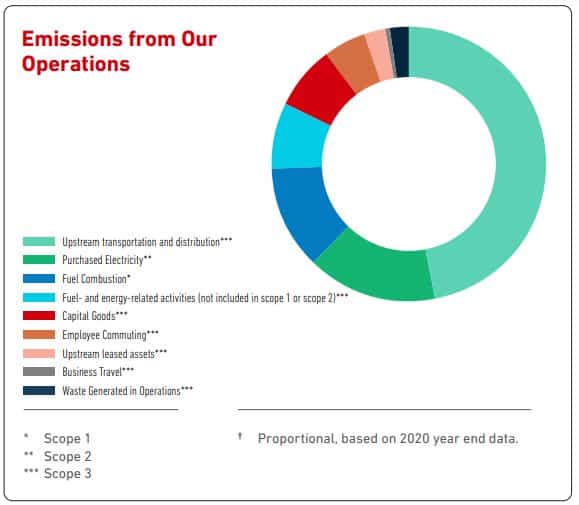Colgate-Palmolive is making huge strides toward achieving its 2040 net zero goal and part of that is its recent deal involving a 20-year virtual power purchase agreement (VPPA) for renewable energy from a solar farm in Texas.
The new 209-megawatt Markum Solar Farm is under development by Scout Clean Energy, a subsidiary of Brookfield Asset Management. It’s one of the largest renewable energy asset owners in the U.S.
The solar farm will start operation in 2025 and will supply clean, renewable energy sources covering 100% of Colgate’s operational power needs in the U.S.
Last year at Climate Week NYC, Colgate-Palmolive announced they’re the first multinational company in the sector to have a Science Based Targets initiative (SBTi)-approved Net Zero target.
Colgate’s Chief Sustainability Officer Ann Tracy noted that:
“Renewable energy agreements are a valuable part of our renewable energy master plan and will help us achieve our targets of Net Zero carbon emissions by 2040 and 100% renewable electricity across our global operations by 2030.”
Colgate’s Net Zero Pathway
Colgate has been tackling climate change and disclosing greenhouse gas emissions data for more than 2 decades. The company has set an ambitious goal of reaching net zero carbon emissions across operations and supply chain by 2040.

2025 targets:
- Reduce Scope 3 GHG emissions from Purchased Goods and Services by 20% against a 2020 baseline
- Reduce Scope 1 and 2 emissions in operations by 20% vs. 2020 levels
- Avoid GHG emissions from consumer use by 20% against a 2016 baseline
- Reduce manufacturing energy intensity by 25% against a 2010 baseline
2030 goals:
- Reach 100% renewable electricity in global operations against a 2020 baseline
- Reduce Scope 3 GHG emissions from Purchased Goods and Services by 42% vs. 2020 levels
- Reduce Scope 1 and 2 GHG emissions in operations by 42% vs. 2020 data
2040 goals:
- Reach Net Zero carbon emissions across the value chain
- Reduce Scope 1, 2, and 3 emissions by 90% vs. 2020 levels
As per Tracy’s remark, Colgate-Palmolive pursues its net zero goals through “innovative and diverse ways that are proven and measurable”. And a big part of that is relying on renewable energy, both on-site projects and VPPAs.
As of the end of 2022, about 52% of Colgate’s global electricity use was sourced from renewable energy. This is crucial because emissions from the company’s manufacturing operations are mostly from purchased electricity (Scope 2) and fuel combustion (Scope 1).
Colgate Net Zero Carbon Approach
To reduce GHG emissions and bring them to zero by 2040, Colgate follows this approach: carbon reduction, low or zero carbon technology innovations, and carbon removal.
The first priority is focusing on ways that reduce carbon emissions across the company’s entire value chain. These include investing in energy efficiency, creating less carbon-intensive products, and influencing suppliers to cut their carbon footprint.
The next climate strategy centers on deploying lower carbon technologies and projects that further cut emissions. In particular, increased use of zero carbon and renewable energy sources, systems electrification, use of PPAs, and renewable energy credits. These measures can help the company make significant progress in its journey to net zero emissions.
The company is also leveraging technology solutions for materials, packaging, manufacturing, transportation, and product use that cut down total carbon emissions.
Lastly, Colgate-Palmolive will apply carbon removals to neutralize any residual emissions from its value chain.
The Use of Carbon Removal Credits
Though the company didn’t reveal how much it’s investing in carbon removals, it’s one of the strategies they’re adopting to achieve net zero.
The oral care producer favors proven nature-based solutions backed by verified carbon credits, including forest protection and reforestation projects. The company said these efforts bring other benefits beyond carbon reductions to the communities where the projects operate.
Colgate is seeking nature-based carbon removal projects developed and managed by reputable organizations. These initiatives must contribute to biodiversity, ecosystem health, as well as local economic development in some cases.
The company will also consider investing in carbon credits from technological removal solutions, such as carbon capture and storage or utilization when they are developed and scaled.
Colgate-Palmolive’s commitment to a 20-year renewable energy agreement and carbon removals mark a significant stride toward their ambitious 2040 net zero emissions target. It underscores their dedication to sustainability and reducing emissions in the fight against climate change.


